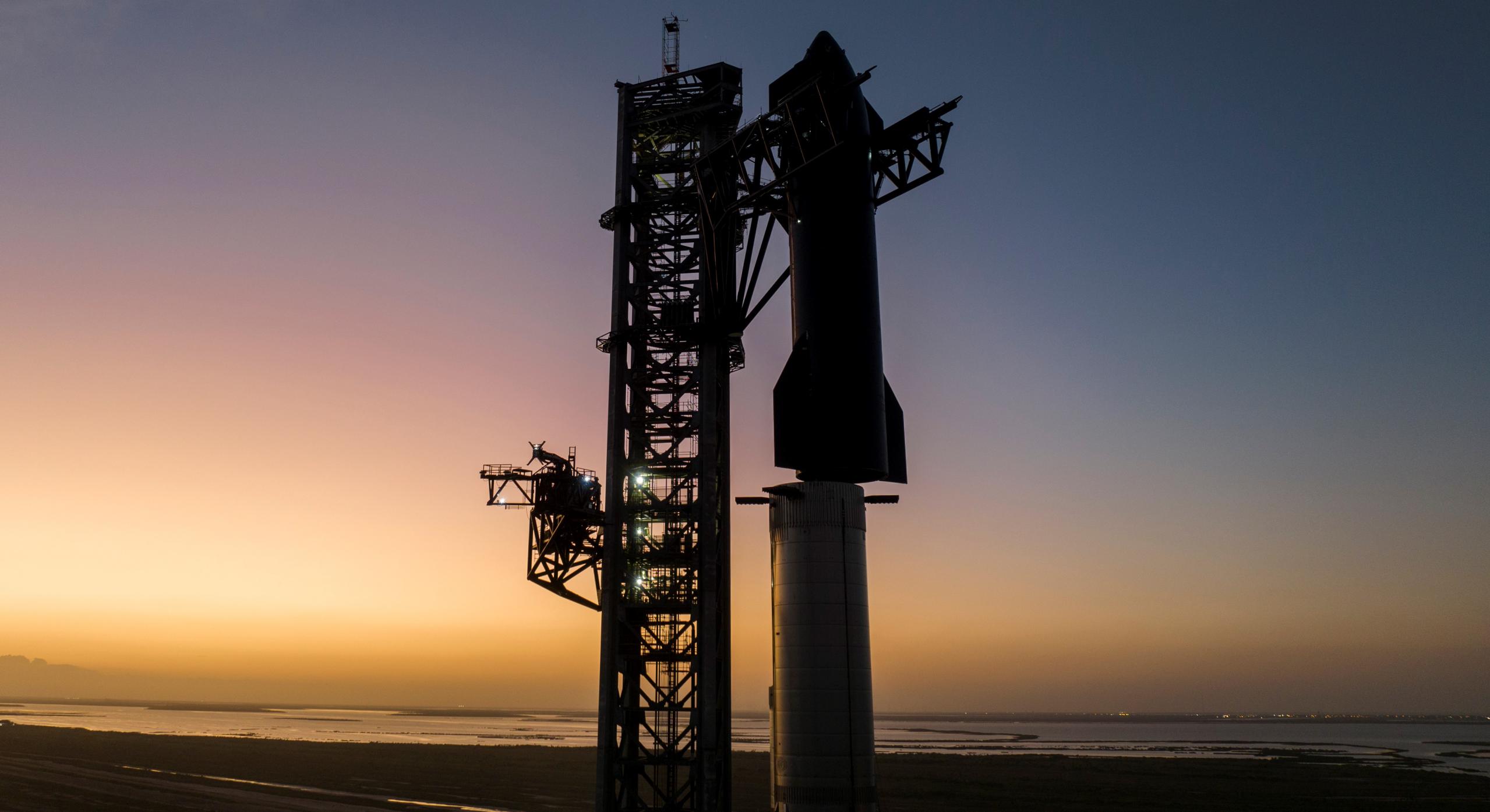
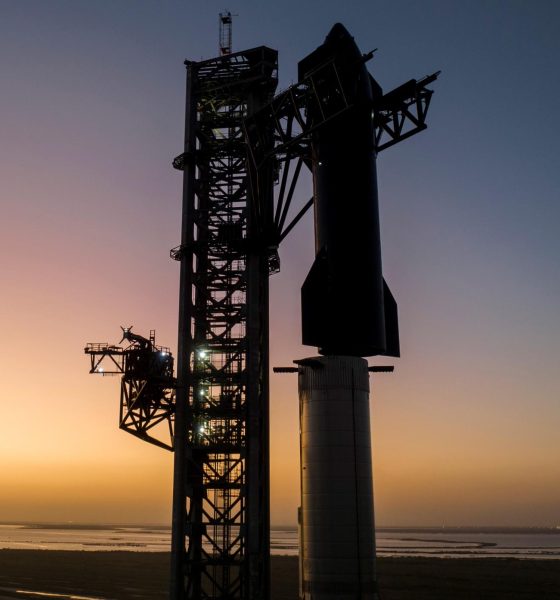
News
SpaceX fully stacks Starship rocket for the first time in six months
For the first time in more than six months, SpaceX has stacked both stages of its next-generation Starship rocket, creating the largest and most powerful launch vehicle ever fully assembled.
It’s not the first time. SpaceX has conducted three other ‘full-stack’ Starship demonstrations: once in August 2021 and again in February and March 2022. But earlier this year, SpaceX (or at least CEO Elon Musk) decided to give up on the Starship upper stage and Super Heavy booster prototypes that had supported all three of those prior tests and, at one point, been considered a candidate for the rocket’s first orbital launch attempt. Booster 4 and Ship 20 were consigned to a retirement yard by June 2022.
By then, SpaceX had already begun testing the new favorites for Starship’s orbital launch debut: Super Heavy Booster 7 (B7) and Starship 24 (S24). Almost exactly six months after the start of that busy period of testing, both prototypes recently reached the point where SpaceX was confident enough in their progress to combine the two for the most challenging phase of Starship testing yet.
After an aborted predawn attempt on October 11th, SpaceX technicians worked out some mystery kinks in crucial infrastructure located at Starship’s first (nearly) finished orbital launch pad in Boca Chica, Texas. As part of a cart-before-horse gamble made by CEO Elon Musk that has seen SpaceX entirely remove legs from all recent Starship and Super Heavy prototypes in the hope that it will one day be able to catch the building-sized rocket stages out of mid-air, the company has built a launch tower ~145 meters (~475 ft) tall and outfitted it with three giant robotic arms. Two of those arms are identical and linked together, forming a sort of claw that could one day close around hovering rockets to preclude the need for landing legs. A simpler third arm swings in and out to connect Starship’s upper stage to the launch pad’s power, propellant, and gas supplies.
The ‘chopsticks,’ as they’re known, have another even more important purpose: assembling Starship rockets at the launch pad. Thanks to their sturdy connection to a tower with a foundation sunk deep into the Boca Chica wetlands and a design that forgoes a hanging hook or jig for giant arms, they are far less sensitive to winds than the immense crane otherwise required to stack Starship on top of Super Heavy. Sitting a stone’s throw from the Gulf of Mexico, storms and high winds are not exactly uncommon.
Around sunset on October 11th, SpaceX had better luck on its third attempt and was able to move the arms into place under Ship 24. Weighing 100 tons or more (~220,000+ lb) and measuring nine meters (~30 ft) wide and ~50 meters (~165 ft) tall, the Starship was then slowly lifted about 80 meters (~250 ft) off the ground, translated over to Booster 7, and lowered on top of the 69-meter-tall (~225 ft) first stage. After about two more hours of robotically tweaking their positions, the two Starship stages were finally secured together. With the arms still attached to Ship 24, SpaceX workers were able to approach the rocket and prepare to connect the swing arm’s quick-disconnect umbilical to Starship.
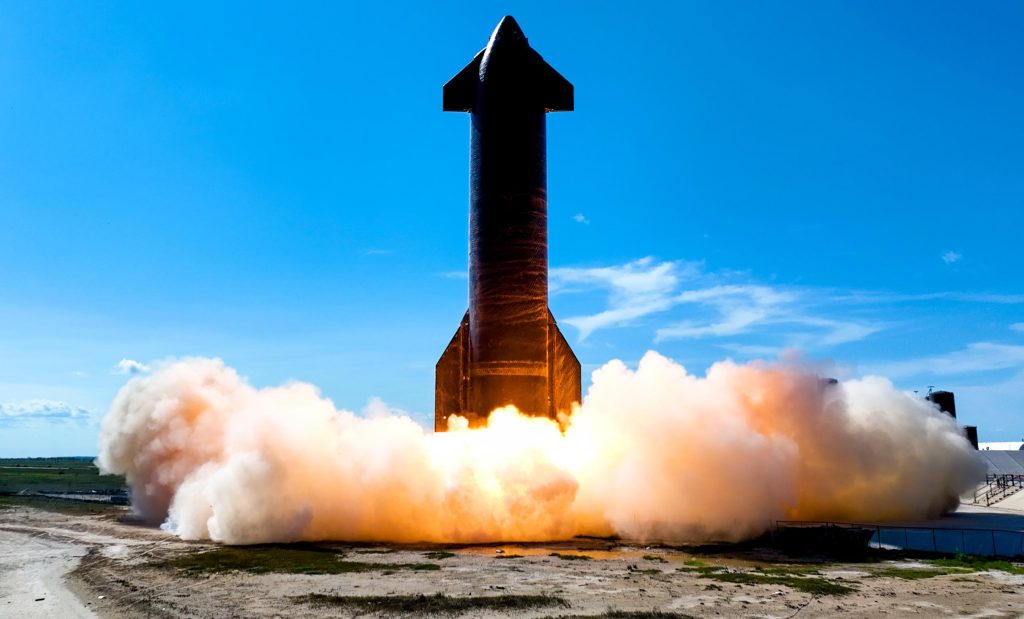
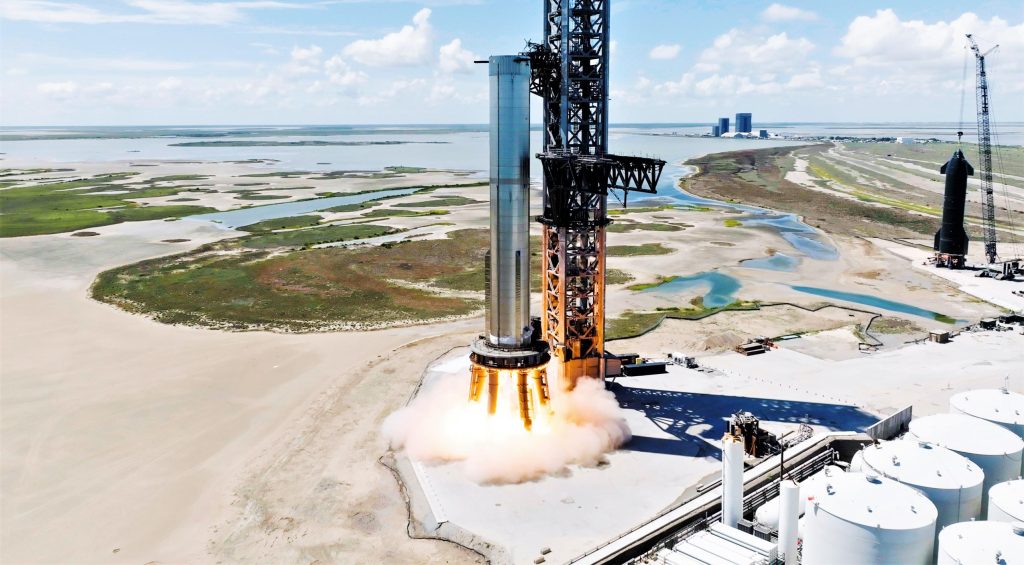
Since they began qualification testing in April and May 2022, Booster 7 and Ship 24 have each completed several cryogenic proof tests, eight ‘spin-primes’ of some or all of their Raptor engines, and several static fires of those same engines. Most recently, Ship 24 ignited all six of its Raptors, but the seemingly successful September 8th test was followed by more than a month of apparent repairs. Booster 7 last completed a static fire that ignited a record seven of its 33 Raptor engines – offering an idea of how much further SpaceX still has to go to finish testing the Super Heavy.
According to CEO Elon Musk, Booster 7 and Ship 24 will attempt Starship’s first full-stack wet dress rehearsal (WDR) once all is in order. The prototypes will be simultaneously loaded with around 5000 tons (~11M lb) of liquid oxygen and methane propellant and then run through a launch countdown. Diverging just before ignition and liftoff, a WDR is meant to be more or less identical to a launch attempt.
If the wet dress rehearsal goes to plan, SpaceX will then attempt to simultaneously ignite all 33 of the Raptor engines installed on Super Heavy B7, almost certainly making it the most powerful liquid rocket ever tested. Even if all 33 engines never reach more than 60% of their maximum thrust of 230 tons (~510,000 lbf), they will likely break the Soviet N-1 rocket’s record of 4500 tons of thrust (~10M lbf) at sea level. It would also be the most rocket engines ever simultaneously ignited on one vehicle. SpaceX will be pushing the envelope by several measures, and success is far from guaranteed.
It’s unclear if SpaceX will immediately attempt a full wet dress rehearsal or 33-engine static fire. Based on the history of Ship 24 and Booster 7 testing, it would be a departure from the norm if the company doesn’t slowly build up to both major milestones with smaller tests in the interim. At minimum, assuming WDR testing is completed without major issue, SpaceX will likely attempt at least one or more interim static fires with fewer than 33 engines before attempting the first full test.
If both milestones (a full WDR and 33-engine static fire) are completed without significant issue, there’s a chance that SpaceX could move directly into preparations for Starship’s first orbital launch attempt without unstacking the rocket. In the likelier scenario that some issues arise and some repairs are required, the path will be more circuitous but should still end in an orbital launch attempt late this year or early next.
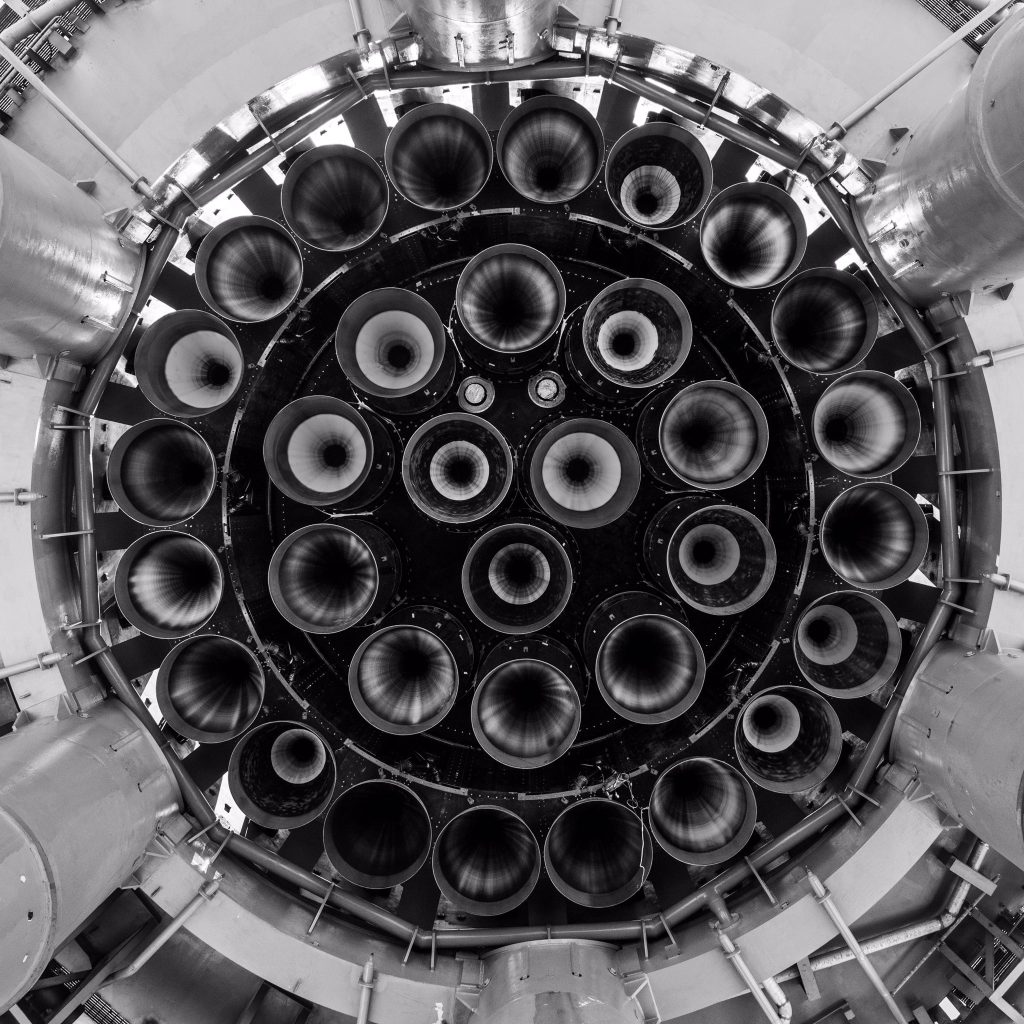
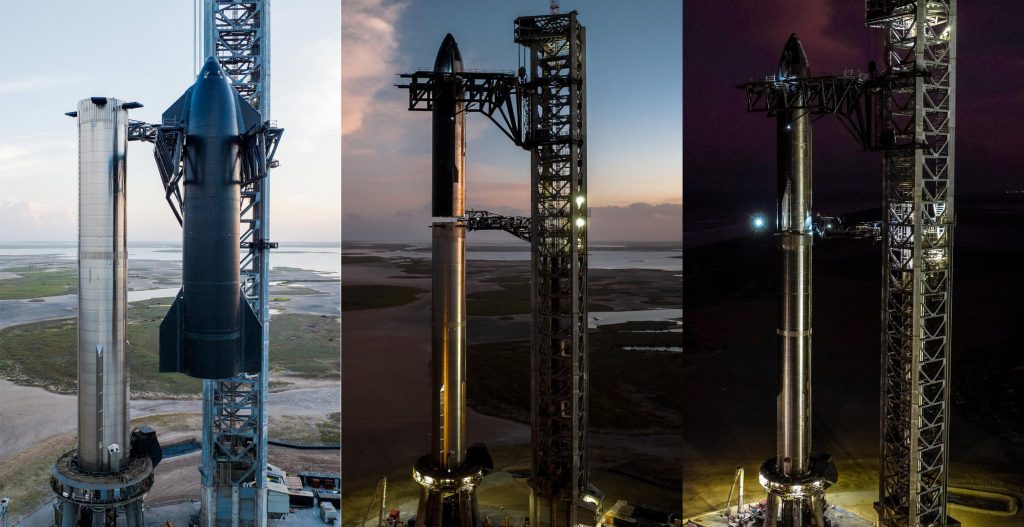

News
Tesla FSD fleet is nearing 7 billion total miles, including 2.5 billion city miles
As can be seen on Tesla’s official FSD webpage, vehicles equipped with the system have now navigated over 6.99 billion miles.

Tesla’s Full Self-Driving (Supervised) fleet is closing in on almost 7 billion total miles driven, as per data posted by the company on its official FSD webpage.
These figures hint at the massive scale of data fueling Tesla’s rapid FSD improvements, which have been quite notable as of late.
FSD mileage milestones
As can be seen on Tesla’s official FSD webpage, vehicles equipped with the system have now navigated over 6.99 billion miles. Tesla owner and avid FSD tester Whole Mars Catalog also shared a screenshot indicating that from the nearly 7 billion miles traveled by the FSD fleet, more than 2.5 billion miles were driven inside cities.
City miles are particularly valuable for complex urban scenarios like unprotected turns, pedestrian interactions, and traffic lights. This is also the difference-maker for FSD, as only complex solutions, such as Waymo’s self-driving taxis, operate similarly on inner-city streets. And even then, incidents such as the San Francisco blackouts have proven challenging for sensor-rich vehicles like Waymos.
Tesla’s data edge
Tesla has a number of advantages in the autonomous vehicle sector, one of which is the size of its fleet and the number of vehicles training FSD on real-world roads. Tesla’s nearly 7 billion FSD miles then allow the company to roll out updates that make its vehicles behave like they are being driven by experienced drivers, even if they are operating on their own.
So notable are Tesla’s improvements to FSD that NVIDIA Director of Robotics Jim Fan, after experiencing FSD v14, noted that the system is the first AI that passes what he described as a “Physical Turing Test.”
“Despite knowing exactly how robot learning works, I still find it magical watching the steering wheel turn by itself. First it feels surreal, next it becomes routine. Then, like the smartphone, taking it away actively hurts. This is how humanity gets rewired and glued to god-like technologies,” Fan wrote in a post on X.
News
Tesla starts showing how FSD will change lives in Europe
Local officials tested the system on narrow country roads and were impressed by FSD’s smooth, human-like driving, with some calling the service a game-changer for everyday life in areas that are far from urban centers.

Tesla has launched Europe’s first public shuttle service using Full Self-Driving (Supervised) in the rural Eifelkreis Bitburg-Prüm region of Germany, demonstrating how the technology can restore independence and mobility for people who struggle with limited transport options.
Local officials tested the system on narrow country roads and were impressed by FSD’s smooth, human-like driving, with some calling the service a game-changer for everyday life in areas that are far from urban centers.
Officials see real impact on rural residents
Arzfeld Mayor Johannes Kuhl and District Administrator Andreas Kruppert personally tested the Tesla shuttle service. This allowed them to see just how well FSD navigated winding lanes and rural roads confidently. Kruppert said, “Autonomous driving sounds like science fiction to many, but we simply see here that it works totally well in rural regions too.” Kuhl, for his part, also noted that FSD “feels like a very experienced driver.”
The pilot complements the area’s “Citizen Bus” program, which provides on-demand rides for elderly residents who can no longer drive themselves. Tesla Europe shared a video of a demonstration of the service, highlighting how FSD gives people their freedom back, even in places where public transport is not as prevalent.
What the Ministry for Economic Affairs and Transport says
Rhineland-Palatinate’s Minister Daniela Schmitt supported the project, praising the collaboration that made this “first of its kind in Europe” possible. As per the ministry, the rural rollout for the service shows FSD’s potential beyond major cities, and it delivers tangible benefits like grocery runs, doctor visits, and social connections for isolated residents.
“Reliable and flexible mobility is especially vital in rural areas. With the launch of a shuttle service using self-driving vehicles (FSD supervised) by Tesla in the Eifelkreis Bitburg-Prüm, an innovative pilot project is now getting underway that complements local community bus services. It is the first project of its kind in Europe.
“The result is a real gain for rural mobility: greater accessibility, more flexibility and tangible benefits for everyday life. A strong signal for innovation, cooperation and future-oriented mobility beyond urban centers,” the ministry wrote in a LinkedIn post.
News
Tesla China quietly posts Robotaxi-related job listing
Tesla China is currently seeking a Low Voltage Electrical Engineer to work on circuit board design for the company’s autonomous vehicles.

Tesla has posted a new job listing in Shanghai explicitly tied to its Robotaxi program, fueling speculation that the company is preparing to launch its dedicated autonomous ride-hailing service in China.
As noted in the listing, Tesla China is currently seeking a Low Voltage Electrical Engineer to work on circuit board design for the company’s autonomous vehicles.
Robotaxi-specific role
The listing, which was shared on social media platform X by industry watcher @tslaming, suggested that Tesla China is looking to fill the role urgently. The job listing itself specifically mentions that the person hired for the role will be working on the Low Voltage Hardware team, which would design the circuit boards that would serve as the nervous system of the Robotaxi.
Key tasks for the role, as indicated in the job listing, include collaboration with PCB layout, firmware, mechanical, program management, and validation teams, among other responsibilities. The role is based in Shanghai.
China Robotaxi launch
China represents a massive potential market for robotaxis, with its dense urban centers and supportive policies in select cities. Tesla has limited permission to roll out FSD in the country, though despite this, its vehicles have been hailed as among the best in the market when it comes to autonomous features. So far, at least, it appears that China supports Tesla’s FSD and Robotaxi rollout.
This was hinted at in November, when Tesla brought the Cybercab to the 8th China International Import Expo (CIIE) in Shanghai, marking the first time that the autonomous two-seater was brought to the Asia-Pacific region. The vehicle, despite not having a release date in China, received a significant amount of interest among the event’s attendees.








